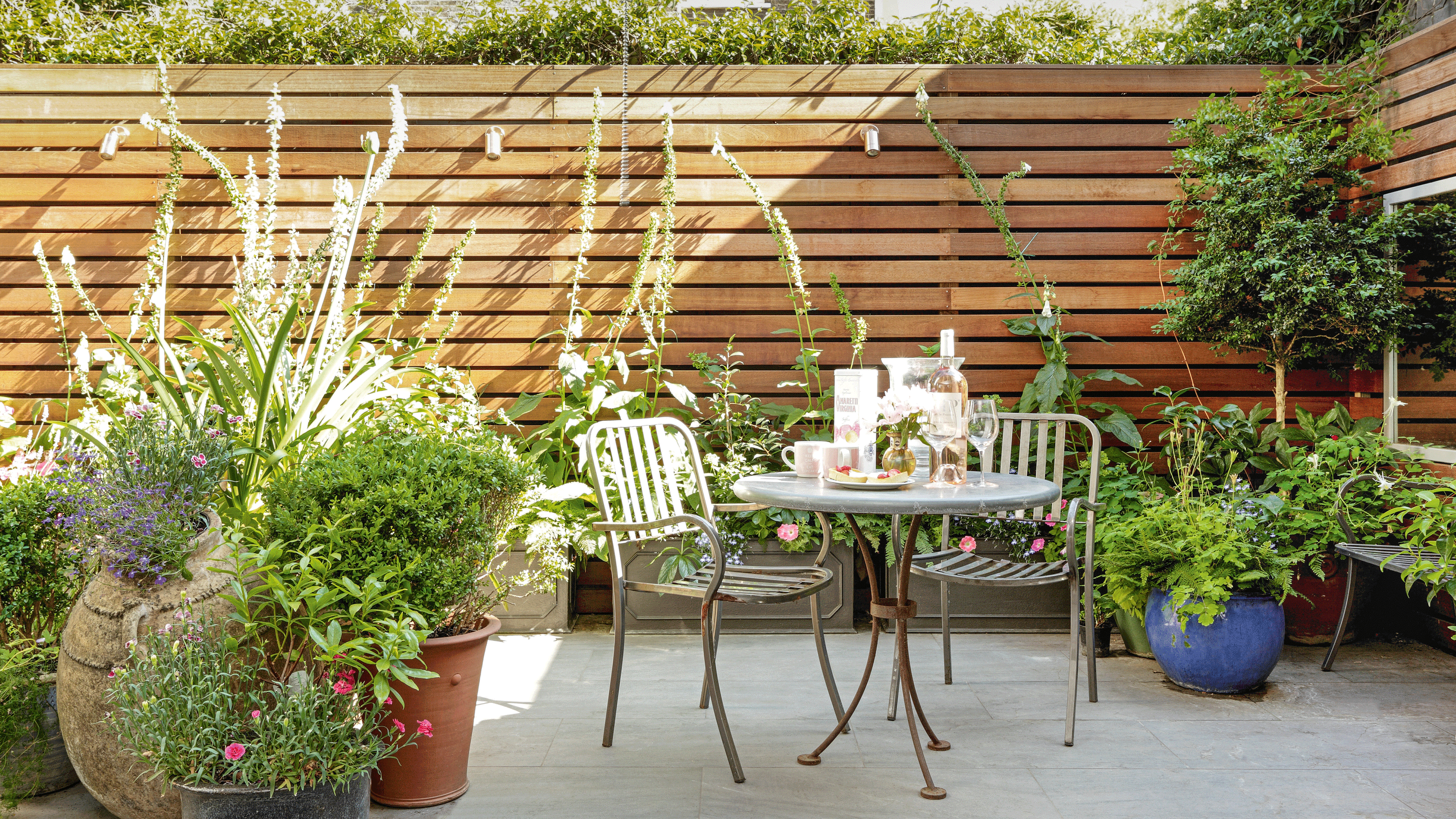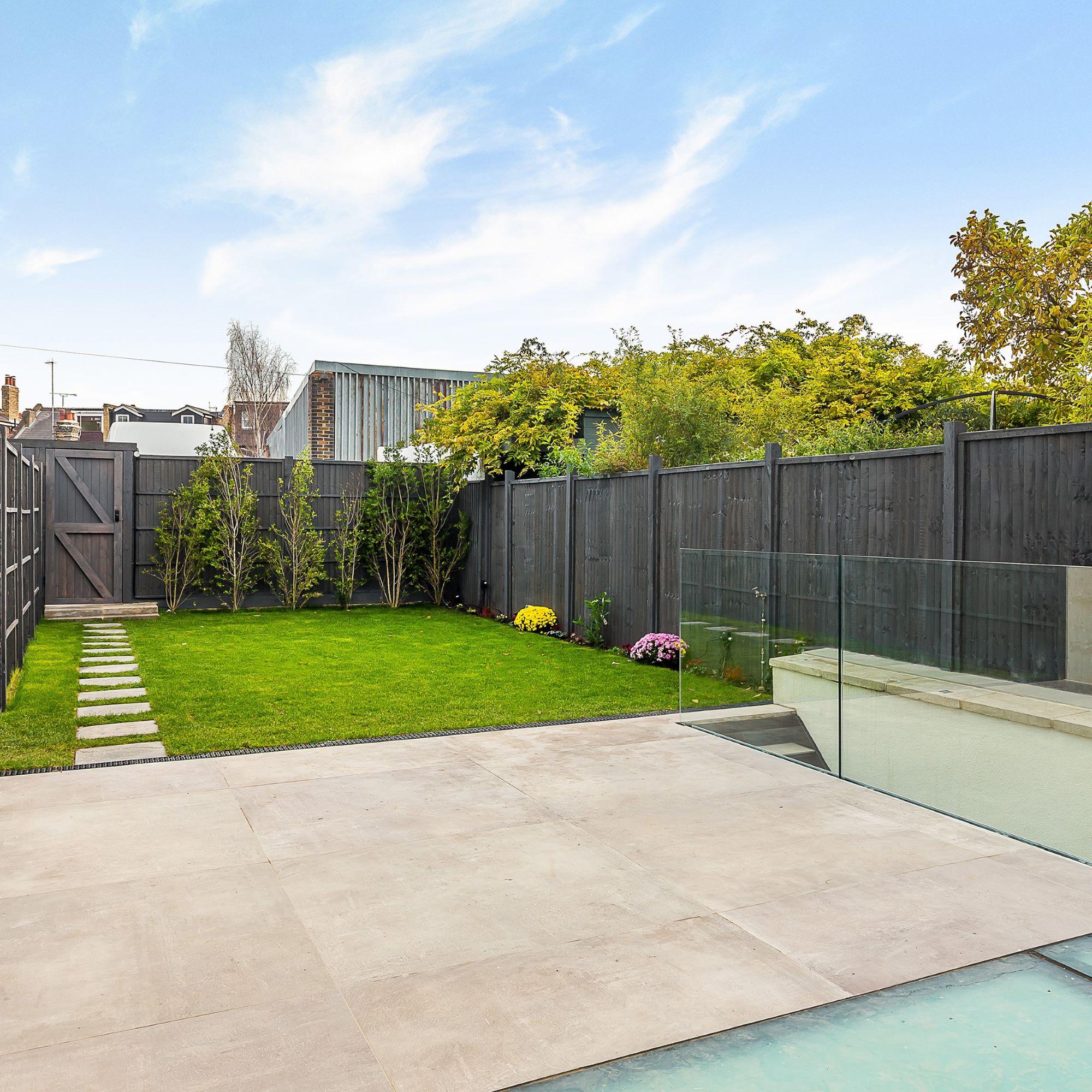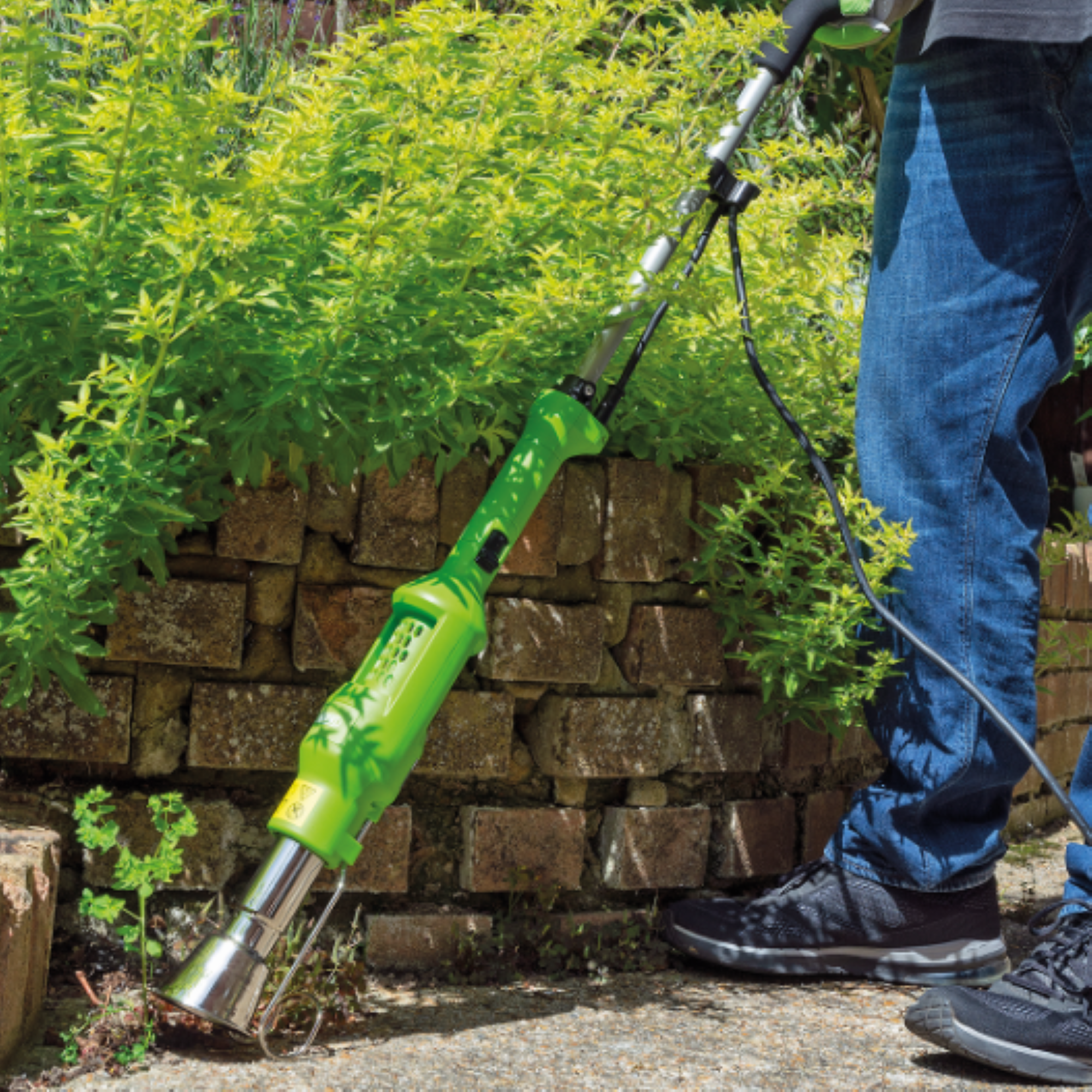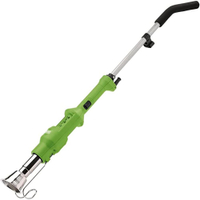How to remove weeds from a patio - an easy guide to get rid of unwanted plants
Rid your patio of unwanted plants with the help of our expert tips


Weeds are unwelcome pests we don't like to see in any area of our garden, but we especially don't want to see them popping up on our patio. If your patio ideas are currently being spoiled by these agricultural menaces, you need to learn how to remove weeds from the patio, quickly and effectively.
Weeds growing between paving stones are easily spotted, and they're a sure way to ruin the look of our patios. Fortunately, just like you can learn how to kill weeds growing anywhere else in your garden, you can learn how to remove weeds from the patio specifically and go back to enjoying your patio area pest-free.
'Unfortunately, the space between the patio and paving slabs is the 'perfect' environment for weeds to grow,' says Rowan Cripps, Founding Director, Infinite Paving. 'The problem usually exists long before you can treat it - combined with their fast-growing abilities, sneaky growth and deep roots, eradicating weeds is very difficult.'
Difficult, but not impossible - we've asked the experts to share their top tips on how to remove weeds from the patio so that they don't grow back.
How to remove weeds from patio
Our guide will make sure you rid your patio of these agricultural pests. Here's everything you need to know about how to remove weeds from patio.

Rowan Cripps is the paving expert and founding director of Infinite Paving, with over 15 years of experience in supplying stone paving.
What causes weeds to grow on patios?

'The space between patio and paving slabs is usually filled with rich and moist soil - the perfect environment for weeds,' explains Rowan. 'In addition, without any other plants to compete with in the space, it has the optimal conditions for the plants to secrete seeds and grow.'
Unfortunately, this means it can be difficult to learn how to remove weeds from patio. 'The weeds are capable of growing into, and or worsening, any cracks in a patio or paving stone,' says Rowan. 'Their seeds and roots are very small, meaning they are often undetectable.'
But, like knowing how to get rid of dandelions, it is possible to kill any weeds growing in your patio so that they don't come back. You will need some supplies to be able to do the job properly though.
What you'll need to remove weeds from patio
- Block paving knife
- White vinegar
- Salt
- Rubber gloves
- Non-toxic weed killer
Step-by-step
1. Remove weeds with a paving knife

'When it comes to removing weeds from your patio, using a block paving knife is bests,' says Paul Hicks, Marketing & Product Manager, STIHL GB. 'Slice through weeds and remove any dirt trapped in the cracks, gathering and disposing of any waste.'
A block paving knife, such as the Kent and Stowe Hand Weeding Knife, £10.40 at Amazon, will allow you to dig up the weeds between the patio slabs by the root, which you'd otherwise struggle to do with your hands.
2. Dispose of the weeds
You'll want to get rid of all the weeds you've pulled up before moving on to the next step. Ideally, transfer all the weeds to a garden waste bin, or the regular bin if you don't have one. Some weeds can be composted, but this isn't advised for some types, so if you're unsure, it's best not to add them to your compost bin.
3. Make a solution to kill any remaining seeds
For learning how to remove weeds from patio so that they don't grow back, you'll need to create a solution that will kill any remaining seeds or roots. A cost-effective method is to combine vinegar and salt, as these are powerfully active agents that will create an environment too hostile for weeds to grow back.
'Simply use a spray bottle and mix 4.5 litres of white vinegar with 600g of table salt and 1 tablespoon of dish soap,' says Jason Wilkinson, Founder, Qwickhose .
4. Pour (or spray) in between the slabs

Next, pour your weed killer solution into the gaps between the paving slabs. Pouring it neat will make sure enough of the solution gets in, but you can also use a spray bottle, as this will give you more control over where the solution goes. It's really important that none of the solution touches any of your other plants, as this will harm their growth and likely kill a lot of them off.
5. Try a specialist weed killer product

If your homemade tonic didn't do the trick and you notice weeds growing on your patio again after a few weeks, you can try a special weed-killing product. 'These use a range of chemicals, such as glyphosate, to target all types of weeds,' Rowan explains.
A lot of weed killers can be harmful for the surrounding environment, so it's important to look for eco-friendly products that won't damage your garden. Any weed killers with toxic chemicals also shouldn't be used around small children or pets, so a non-harmful alternative is the best bet all round.
With rubber gloves, apply your chosen weed killer to the weeds between your patio slabs according to the manufacturer's instructions. This should do an effective job at removing the weeds, both quickly and permanently.
Draper Tools Electric Weed Burner, was £34.95 now £28 at Amazon
This weed burner works by transmitting a precise burst of thermal heat which zaps weeds at the root without the use of dangerous flames. It's environmentally friendly and works in just a few seconds. Ideal if you've got pets and don't want to use toxic chemicals in your garden or patio.
And that's it! You've successfully learnt how to remove weeds from patio, and you can focus on more enjoyable jobs, like revamping your patio decor ideas.
FAQs
What is the fastest way to remove weeds from pavers?
Weed killers are the fastest to remove weeds from pavers, as these are specially formulated to kill weeds at the root. Remember, it's important not to use a weed killer with any harmful chemicals on your patio, as it may run between the paving slabs and reach your other plants. Look for products marketed as non-toxic.
'Those with concrete paving stones can also use a pressure washer to blast away any weeds,' says Rowan from Infinite Paving. 'Just make sure to avoid using such a tool on pavers created from natural stone, such as limestone or sandstone, as this could damage them.'
Another quick way of learning how to remove weeds from patio that is also safe is to use boiling water. 'Boiling water can kill growing weeds very quickly,' says Fiona Jenkins, Gardening Expert, MyJobQuote. 'Though it’s important to be very careful when pouring the boiling water on the weeds as you don’t want to cause any damage to the surrounding plants or lawn.'
How do I permanently get rid of weeds on my patio?
'To make sure weeds do not return, you need to make sure there are no remaining seeds or roots in the soil,' Rowan says. 'The easiest way is to create a solution using a mix of soap, vinegar, and salt.'
'The salt helps to prevent the weeds growing back,' explains Jason Wilkinson, Qwickhose. 'And white vinegar draws moisture out of the plants overnight. Leave your solution overnight, then in the morning scrub your patio with a stiff-bristled brush and then wash off the residue with a garden hose.'
The powerful ingredients of vinegar and salt should permanently kill any weeds growing on your patio, but if you do notice some coming back, you can invest in a specialist weed killer instead.
Get the Ideal Home Newsletter
Sign up to our newsletter for style and decor inspiration, house makeovers, project advice and more.

Katie has been writing freelance since early 2022, specialising in all things homes and gardens, following achieving a Masters in Media and Journalism. She started out writing e-commerce content for several of Future’s interior titles, including Real Homes, Gardeningetc, Livingetc, and Homes and Gardens. Since then she’s been a regular contributor on Ideal Home’s digital team, covering news topics, how-to guides, and product reviews.
-
 Will a conservatory add value to your home and how can you maximise it?
Will a conservatory add value to your home and how can you maximise it?This is what the pros say
By Amy Reeves
-
 I’ve been looking for a new signature scent for my home and The White Company's new fragrance is the exact summer holiday smell I needed
I’ve been looking for a new signature scent for my home and The White Company's new fragrance is the exact summer holiday smell I neededSantorini smells fresh, summery and sophisticated
By Kezia Reynolds
-
 How to remove algae from garden walls in five steps – and the cleaning product experts rave about for tackling it fast
How to remove algae from garden walls in five steps – and the cleaning product experts rave about for tackling it fastExperts share their top tips for getting garden walls algae-free
By Katie Sims
